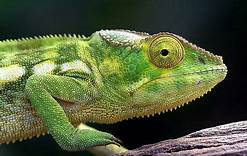How Long Do Chameleons Live As Pets?
Chameleons, with their vibrant color-changing abilities and arboreal lifestyle, make fascinating pets. They come from Madagascar and parts of mainland Africa. However, before committing to a chameleon as a pet, it's essential to understand their unique care requirements and typical lifespan.

Life Expectancy of Chameleons in Captivity
In general, chameleons live longer in captivity than in the wild due to the consistent care and controlled environment provided by their owners. Here's an overview of the average lifespan of different chameleon species in captivity:
1. Veiled Chameleon (Chamaeleo calyptratus):
- Average Lifespan: 5-8 years
- This species is known for its impressive casque and wide range of colors. They typically live for around five to eight years, although some individuals may live up to 10 years.
2. Jackson's Chameleon (Trioceros jacksonii):
- Average Lifespan: 5-8 years
- Jackson's chameleons are recognizable by their striking three-horned structure. Similar to veiled chameleons, they have an average lifespan of five to eight years, with some living up to 10 years.
3. Panther Chameleon (Furcifer pardalis):
- Average Lifespan: 3-5 years
- Panther chameleons are renowned for their vibrant color patterns. Unfortunately, they typically live for a shorter time compared to other chameleon species, with an average lifespan of three to five years.
4. Carpet Chameleon (Furcifer lateralis):
- Average Lifespan: 5-8 years
- Carpet chameleons are known for their distinct patterns and textures. They have a slightly longer lifespan compared to panther chameleons, typically living for around five to eight years.
5. Meller's Chameleon (Chamaeleo melleri):
- Average Lifespan: 10-12 years
- Meller's chameleons are considered the largest chameleon species, and they also boast a longer lifespan. These impressive chameleons can live for 10 to 12 years in captivity.
Factors Affecting Chameleon Lifespan
While the information above provides an overview of the average lifespan of various chameleon species, there are several factors that can influence an individual chameleon's lifespan in captivity.
1. Proper Care:
- Providing a chameleon with appropriate enclosure size, temperature, humidity, and nutrition is essential for their well-being and longevity. Lack of proper care can result in stress, illness, and reduced lifespan.
2. Diet:
- Chameleons have unique dietary requirements based on their species. Offering them a balanced diet consisting of a variety of live insects, plants, and supplements ensures they get the nutrients they need for a healthy life.
3. Hydration:
- Chameleons rely on water droplets for hydration. Providing a water source and misting the enclosure regularly helps them stay hydrated, which is crucial for their overall health and lifespan.
4. Stress:
- Stress can be detrimental to a chameleon's health. Handling them excessively, making sudden movements, or exposing them to loud noises can cause stress. Providing a calm and stable environment is essential for their well-being.
5. Medical Care:
- Regularly scheduling checkups with a veterinarian experienced in exotic pet care is essential. Early detection and treatment of diseases and health issues can contribute to the chameleon's overall lifespan.
Conclusion
The lifespan of chameleons in captivity can vary depending on the species and the quality of care provided. With the right care, chameleons can thrive in captivity for several years, providing their owners with unforgettable moments of wonder and fascination. If you are considering getting one of these remarkable creatures as a pet, ensure you are committed to providing it with the care necessary for a long and healthy life.
Declaration: All article resources on this website, unless otherwise specified or labeled, are collected from online resources. If the content on this website infringes on the legitimate rights and interests of the original author, you can contact this website to delete it.






